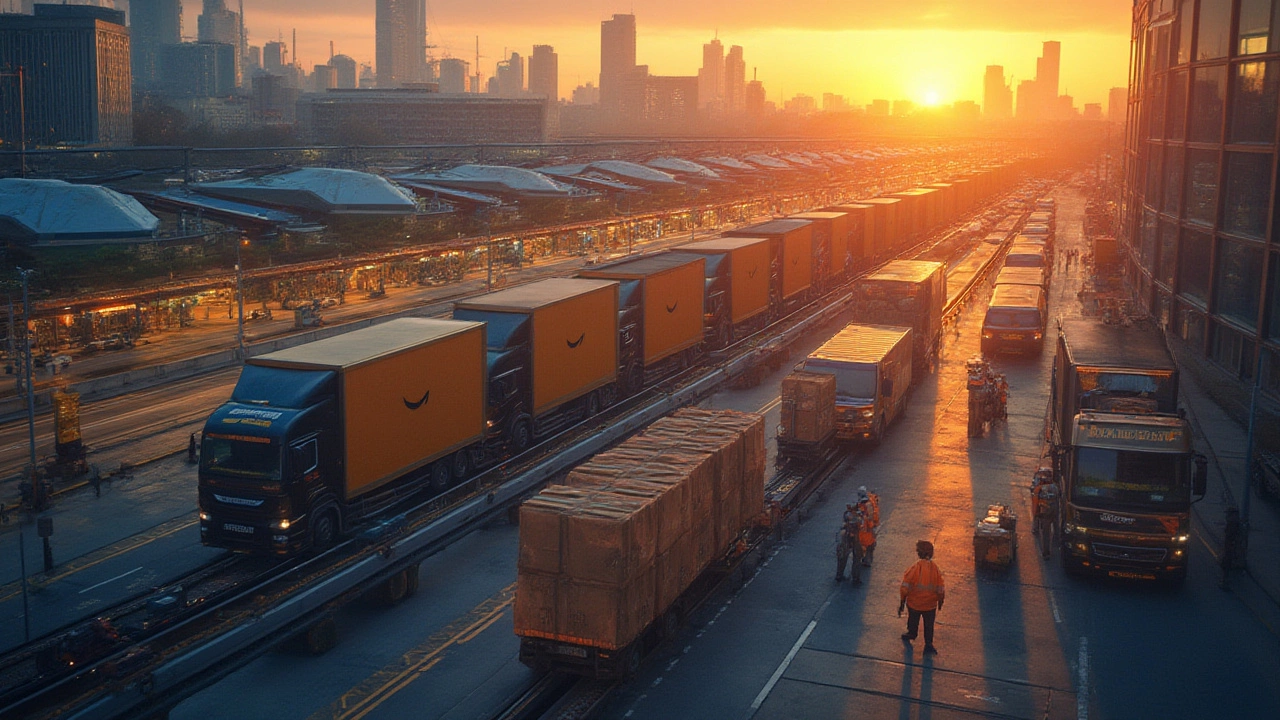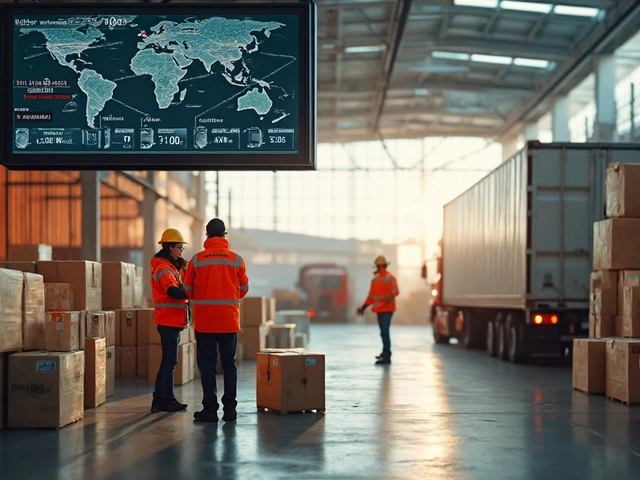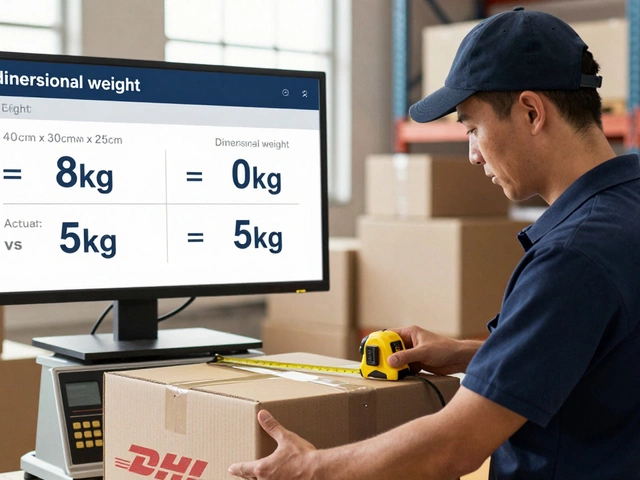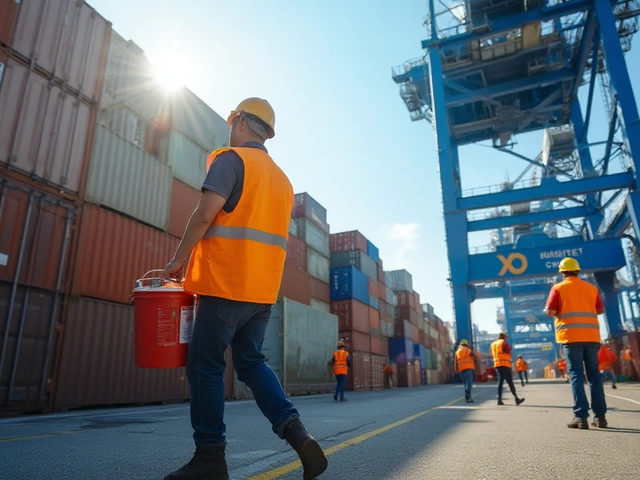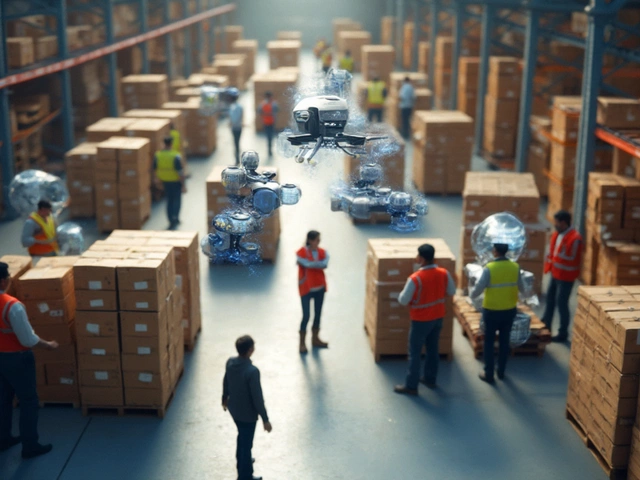If you’ve ever ordered something on Amazon and wondered how that little package zips to your doorstep so quickly, you’re onto something big. Amazon doesn’t just sell stuff; it’s deep into the nitty-gritty of delivering it, too. The company’s logistics arm isn’t a secret club or a hidden contractor—Amazon Logistics is very much real, and it’s quietly become a giant in the delivery world. But what does owning a logistics company actually mean for Amazon—and, let’s be honest, for the rest of us who click that tempting “Buy Now” button?
Amazon Logistics: More Than Just Fast Shipping
When people hear “Amazon,” most picture an endless online store. But for anyone keeping an eye on the twisty maze of global shipping over the past decade, Amazon has shifted from being just an e-commerce platform to a logistics powerhouse. Amazon Logistics (often called AMZL) is the company’s branch specifically built to tackle the growing pile of orders, especially those Prime parcels that seem to appear out of thin air with next-day or even same-day delivery.
This isn’t just about owning a couple of delivery vans. By 2025, Amazon Logistics is estimated to handle close to two-thirds of its own parcel deliveries in the US—that’s not counting the thousands of trips handled under its name around the globe. To put that into perspective, Amazon, in some areas, even outpaces classic delivery names like FedEx or UPS in daily package volume. That’s wild when you remember Amazon didn’t start as a shipping service at all.
Why build a logistics empire? Simple—control and speed. By running its own show, Amazon doesn’t have to wait for someone else to pick up and drop off packages. It’s got more flexibility to choose when, where, and how parcels move. This means new features, like Amazon Key (which lets vetted drivers place packages inside garages or homes), made possible because Amazon runs the entire courier chain.
So yes, Amazon absolutely has its own logistics company. And it’s not just tinkering around the edges; it’s reprogramming how global shipping works, and it’s doing it fast.
How Does Amazon Logistics Actually Work?
Amazon’s logistics network is a giant, humming machine that runs behind the scenes every minute of every day. When you order that book, blender, or quirky cat lamp, your parcel’s journey begins at an Amazon fulfillment center. There are more than 175 of these tech-packed warehouses worldwide, scattered in strategic spots so things don’t have to travel far. Here’s where barcodes, robots, and people work side by side. Items get picked, packed, and loaded into bins destined for different cities and neighborhoods.
Once your order is packed, it enters the “middle mile.” This is Amazon-speak for the part where goods move between facilities—like from a big regional warehouse to a local delivery station closer to you. Amazon uses its own fleet of Prime-branded semi-trucks, local sprinter vans, and a growing number of electric vehicles to make these hops. It also dabbles in air shipping. By early 2025, Amazon Air, its cargo airline, has more than 110 planes flying routes in the US, Europe, and Asia. This helps when time is extra tight, like during the holidays.
Things get personal in the “last mile”—the final leg, from the delivery station to your doorstep. This is where Amazon’s Delivery Service Partners (DSPs) come in. Launched in 2018, this program lets small business owners run fleets of Amazon delivery vans under the Amazon name. As of mid-2025, there are over 2,500 DSP partners in the US alone, each employing dozens of drivers. You’ll spot these folks in blue uniforms, with hand-held scanners and a relentless pace, often delivering parcels into the evening hours and weekends.
Amazon also uses gig workers through its Amazon Flex service. People sign up to deliver parcels in their own cars, picking up blocks of packages and dropping them off kind of like rideshare drivers. This mix of contracted and gig drivers means Amazon’s network can balloon up during sales, Prime Day, or the Christmas rush—no bottlenecks, just more flexible capacity.
Here’s a neat breakdown of Amazon’s delivery power, based on recent estimates:
| Year | Amazon-handled Deliveries (US, est.) | Global Fulfillment Centres | Last-Mile Partners |
|---|---|---|---|
| 2021 | ~4.2 Billion | 175+ | 1800+ |
| 2023 | ~6 Billion | 185+ | 2200+ |
| 2025 | 7+ Billion (est.) | 200+ | 2500 (US) |
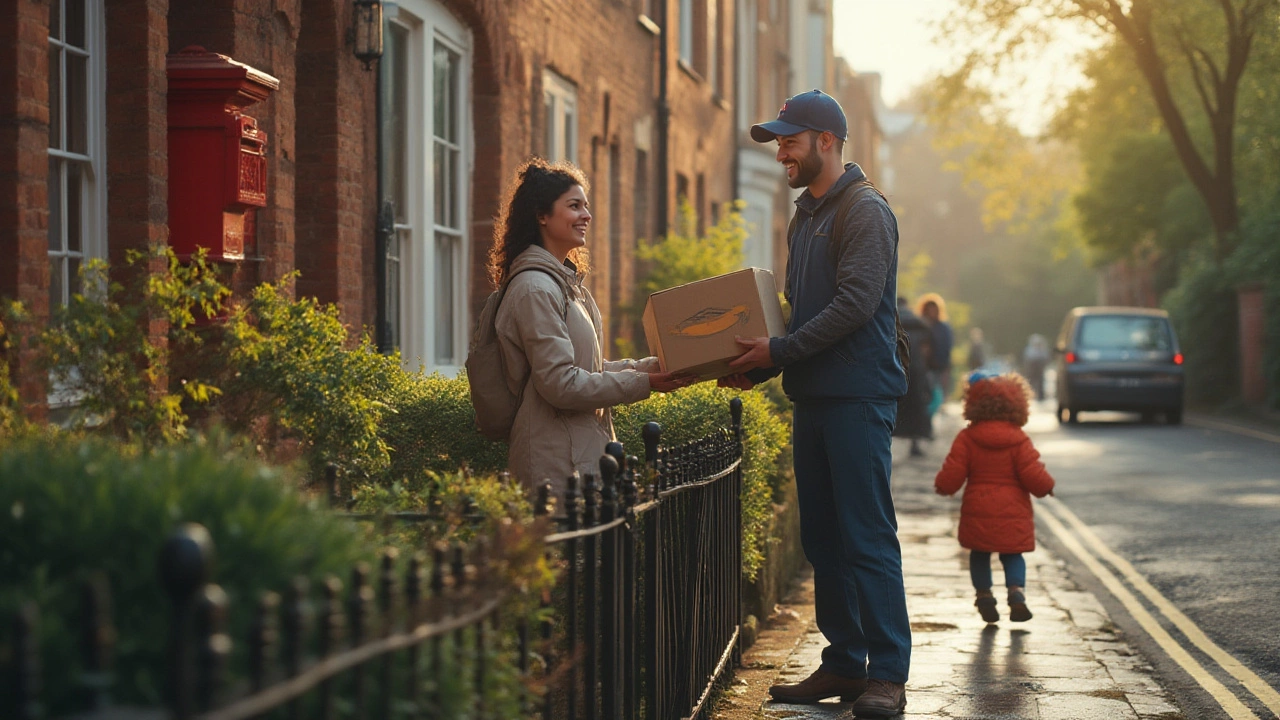
The Scale and Innovations of Amazon’s Delivery Network
Calling Amazon’s logistics network “big” doesn’t do it justice. It’s not just about the number of warehouses or the army of blue vans—Amazon’s real power comes from its ability to invent new ways to move stuff. Let’s talk about a couple of the flashiest examples. Amazon was among the first big names to pilot delivery drones. Yes, actual flying drones. In a few test cities (in the US and the UK), Prime Air drones buzz parcels straight to your backyard in under 30 minutes. OK, it’s not everywhere yet, but those pilot runs make one thing clear: Amazon isn’t afraid to bet on the future, even if it needs to kludge through regulatory hoops.
Then there’s machine learning. Amazon’s systems predict what items will be popular before they’re even ordered, shipping those hot products closer to customer hubs “preemptively.” This “anticipatory shipping” trims hours (sometimes even whole days) off certain orders—it almost feels like Amazon reads your mind. The company also uses AI to plot ultra-efficient delivery routes for drivers, cutting down on miles and fuel.
Ever heard of “hub and spoke” for shipping? Amazon turned the volume up on this old-school logistics idea: major regional “hubs” (gigantic fulfillment and sortation centers) feed local “spokes” (smaller stations and lockers), which in turn dispatch individual drivers for last-mile drop-offs. This lets Amazon fine-tune deliveries, slotting in extra trucks where demand spikes and smoothing out inefficiencies so packages arrive right when you expect them.
Amazon even lets customers pick up packages from lockers—self-serve kiosks tucked into supermarkets, convenience stores, and apartment blocks. Forgot to be home for delivery? No sweat. This self-pickup option is a game-changer, especially for folks who aren’t home during traditional delivery windows. It’s a reminder that Amazon’s logistics isn’t just about control; it’s about flexibility.
How Amazon Logistics Compares With Traditional Shipping Giants
So how does Amazon Logistics actually stack up against the old guard—FedEx, UPS, DHL? First up, volume: By 2023, Amazon was already handling more parcels in the US than FedEx, trailing only UPS and the US Postal Service. The difference is that most of those deliveries are for Amazon’s own customers. While UPS and FedEx deal with everyone from law offices to flower shops to grandma’s secret fudge business, Amazon’s nearly entire network is optimized for its own marketplace. It’s a closed loop, designed for speed and scale—not for every postage oddity.
Amazon sometimes still relies on third-party carriers, especially in remote or international deliveries, but it keeps expanding its own footprint every year. This strategy drives competitors to match Amazon’s speed—cue the arms race for faster and cheaper shipping, across the whole industry. For shoppers, this means two-day or even same-day delivery windows are becoming normal expectations, not just Amazon luxuries.
Here’s a secret weapon: data. Amazon knows which neighborhoods shop late at night, which items spike on weekends, and even which times of year porch pirates strike hardest. It uses this info to route deliveries safely, efficiently, and in ways that keep the packages out of harm’s reach.
Operationally, Amazon’s logistics run on precision and flexibility. Delivery Service Partners are technically independent businesses, but they all follow strict Amazon standards—tracking apps, driver training, on-time metrics, and even vehicle appearance. The company invests heavily in electric vehicles and green warehouse initiatives; in 2024, it ordered more than 100,000 custom electric vans from Rivian, working toward a greener (and quieter) fleet.
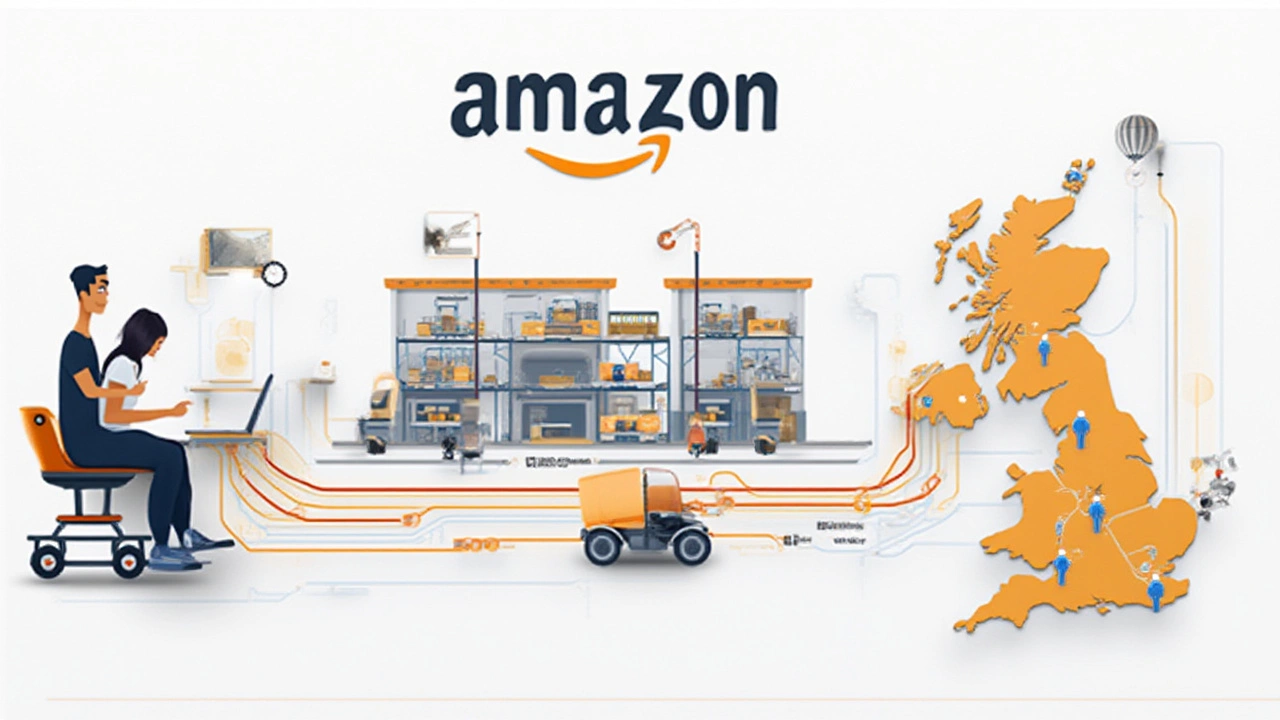
Why Amazon’s Logistics Ambitions Matter for Shoppers and Sellers
Amazon running its own logistics company isn’t just about saving money or flexing on competitors—it shapes the buying and selling experience in ways most people don’t realize. Shoppers feel the impact every time they see “Arriving tomorrow” or get live tracking notifications right up to the moment a parcel is dropped at their front door. Faster, more predictable shipping has changed what people expect when they shop anywhere online.
For third-party sellers, the Amazon Logistics network is both a blessing and a power move. By joining Fulfillment by Amazon (FBA), sellers plug directly into Amazon’s delivery beast. FBA handles picking, packing, shipping, and even returns. As a result, smaller sellers can access Prime’s speedy shipping and reach more buyers, but it comes with fees and strict performance standards. Miss those? Your privileges could be on the line.
Here’s a must-know: Amazon sometimes offers its delivery network to other companies through an invite-only “Amazon Shipping” program. Retailers outside the Amazon marketplace can tap into the same delivery muscle, though this is still limited and open mostly in the UK and parts of the US. If this grows, Amazon could compete head-to-head with UPS and FedEx for everyone’s packages—not just its own.
There’s also the question of workforce. Drivers often work long days, covering dozens of stops. With so much focus on speed, Amazon puts serious resources into driver support, safety tech, and route optimization, but labor groups have raised concerns about pay, conditions, and job security in gig and partner models. It’s a reminder that every fast delivery has a whole army of real people (not robots) making it happen—packages don’t magically deliver themselves… yet.
For shoppers and sellers alike, understanding Amazon’s stake in logistics reveals a lot about where global retail is headed. It shapes what’s possible for next-day and same-day delivery, and it’s re-writing the rules for convenience, speed, and service. One thing is clear: the line between retailer and shipper is breaking down. Amazon is now both.
